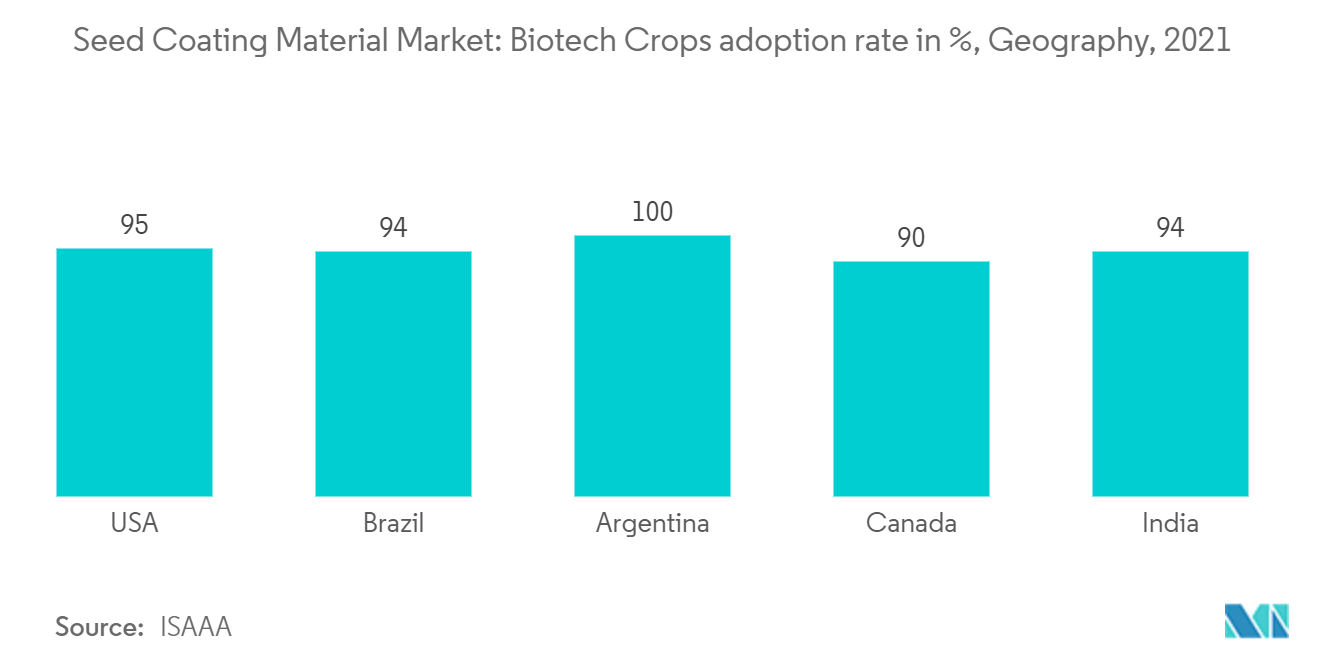Market Trends of Seed Coating Material Industry
Increasing Demand for Enhancing Seed Performance
- The global per capita land and arable land area have been witnessing a falling trend over the years, leading to a huge gap in demand and supply. To reduce the demand and the supply gap in agricultural products, the yield of crops needs to be increased. Seed diseases and volatile environments are a few major challenges farmers face since they decrease crop yield. Therefore, this boosts the demand for seed coatings as coating the seed with pesticides, fertilizers, plant growth regulators, and others helps accelerate seed performance and germination.
- Due to the increasing area under it, the major demand for seed coating is from biotech crops. The global hectarage of biotech crops has been increasing continuously in the past few years. An accumulated biotech area of 2.7 billion hectares makes biotechnology the fastest-adopted crop technology in the world. High adoption rates reflect farmer satisfaction with the products that offer substantial benefits ranging from more convenient and flexible crop management to lower cost of production.

North America Dominates the Market
- Seed coating is found to be effective for the seeds in enhancing their germination and protecting them from pests. The coating is applied to the seeds of high-value crops, such as wheat, cotton, hybrid vegetables, and others, to protect them from pests and diseases. The increasing area under these crops in North America drives the market's growth. Demand in the North American market is majorly led by countries such as the United States, Canada, and Mexico.
- The United States is the largest market for seed coatings in North America due to supportive regulations like the compulsory coloring of treated seeds coupled with growing demand for yield. Additionally, increasing farm size and decreasing crop rotation coupled with the rising awareness of bioproducts are the major factors driving the demand for seed coating materials in the country.
- Corn is one of the major crops grown in the United States, and a high number of seeds used in the country are treated with the seed coating material, and this percentage is growing. While most coatings include chemicals like copper compounds and antibiotics, new biologically-based coatings are increasingly important. Biological coatings are becoming more selective based on the preservation of soil microbiome and are compatible with organic practices. Hence, these factors are anticipated to bolster market growth during the forecast period.


